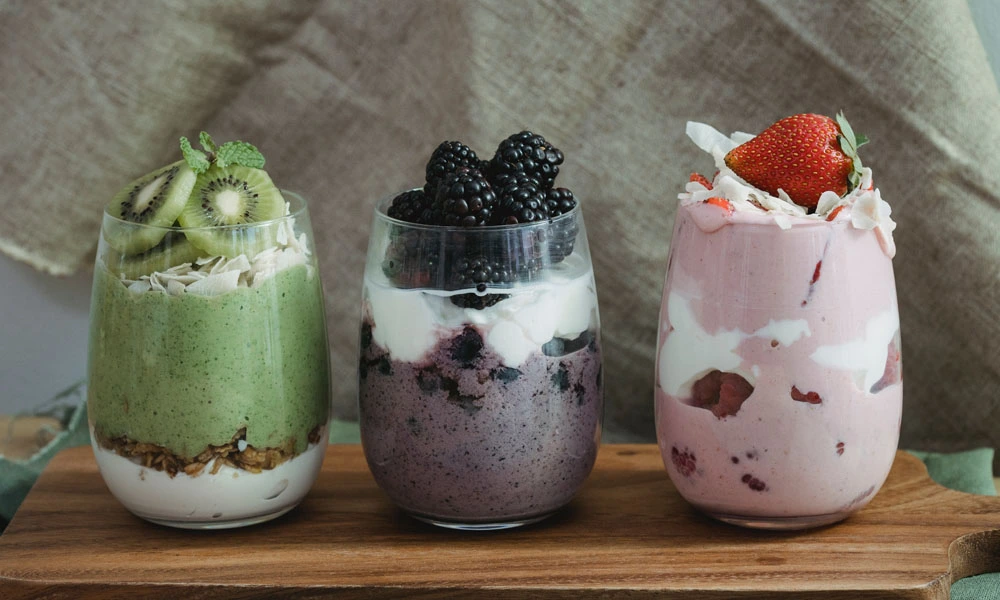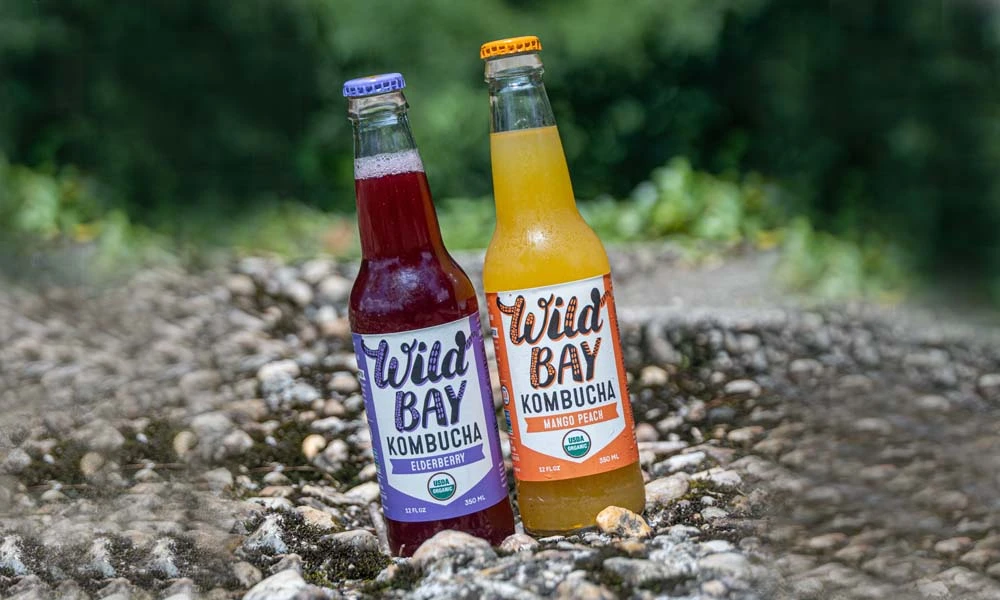Food fermentation has been around for centuries. Before refrigeration, our ancestors would preserve their foods and drinks through fermentation.
Later, when innovators introduced refrigeration technology, many tapped into the new technology and abandoned their old ways of fermenting foods.
However, in the recent past, fermented foods and drinks have gained massive popularity. But why is this so? Food preservation? Largely, no!
Recently, food scientists have discovered several vital health benefits in fermented products, which explains the current huge demand for these foods.
And because I want you to sail with the current trend, hereunder, I will give you a list of the healthiest fermented foods and how they will benefit your body.
Table of Contents
What is Food Fermentation?
To ensure we are sailing in the same boat, let's first see what fermentation is.
Now, fermentation refers to allowing naturally present or added bacteria or yeast to work their magic in food or drinks. This process results in the death of harmful bacteria and allows the growth of good bacteria.
According to Sandor Katz and Louis Pasteur, food fermentation gurus, the good bacteria helps preserve the food and produce the health benefits we shall see later.
In addition, there are three types of fermentation processes used in either commercial or home food preparations:
1. Acetic acid fermentation
Used in making vinegar, kombucha, and tangy condiments.
2. Lactic acid fermentation
Lactic acid is used in making yogurt, sourdough, sour cream, sauerkraut, kimchi, and pickles.
3. Alcohol fermentation
Used to make beer, wine, and other alcoholic drinks
Types of Foods that Can be Fermented
Some of the foods that can be fermented include fresh vegetables(such as cabbage), cucumber, fruits, grains, dairy products, meat, and seafood.
Also, some manufacturing processes use fermentation. For example, in the processing of chocolate, white pepper, and coffee beans, a fermentation process helps remove the skin of the beans and get the inner seeds.
Healthiest Fermented Foods
So far, we have seen what wild fermentation is and the types of foods that can be fermented. Now, let's look at the healthiest fermented foods you can introduce into your diet.
1. Kimchi
Kimchi is a staple Kolean cuisine prepared from salted and fermented vegetables using several types of seasonings.
Most grocery stores will have kimchi in their refrigerated sections.
Additionally, you can enjoy this food on its own or use it to garnish your stir-fried chicken wings or grilled steak.
2. Sauerkraut
It's very easy to make this ancient food in the comfort of your home. All you will need is to ferment a combination of shredded cabbages and some salt.
Also, some sauerkraut recipes recommend using a variety of spices such as red pepper, turmeric, cumin, and other fresh grated spices such as garlic and ginger.
So, how will you eat sauerkraut? You can enjoy your sauerkraut in many ways, including using it as a topping on scrambled eggs, avocado toast, fried chicken chops, or even blending it to make a salad dressing.

3. Cottage cheese
Cottage cheese is rich in probiotics essential for weight loss and gut & heart health, as we shall see later.
However, when buying cheese, ensure you go for brands with low sugar and beneficial bacteria.
You can enjoy your fermented cheese as a topping on your vegetable soup, sweet pancake, sugar-free crispy nut cake, sweet potato pudding, and many other foods
4. Yogurt
Yogurt is a popular beverage worldwide, and you probably know it is rich in beneficial probiotics and proteins.
The only problem with some yogurts being sold today is that they contain high amounts of added sugar. So, to be safe, go for yogurts with less than 18 grams of added sugar.
Also, you can take whole-fat yogurt, Greek yogurt, or non-fatty yogurt, depending on your weight goals.
That said, you can grab a glass of yogurt as part of your breakfast to fuel you for the rest of the day!

5. Kefir
Kefir, like yogurt, is a fermented drink but thinner than yogurt. This drink is very popular in Europe and Asia and has recently been gradually gaining popularity in the US.
Another difference between Kefir and yogurt is that Kefir is fermented using a combination of yeast and bacteria, also called "kefir grain." On the other hand, yogurt is fermented solely using the microbes present in milk.
You can drink Kefir in conjunction with your breakfast or on its own.
One more thing to note is that kafir is often available in two versions: dairy and dairy-free.
The dairy-free version comprises water, kefir grains, and sugar. However, the health benefits of the dairy-free Kefir are yet to be documented.
Hereunder are the health effects of dairy kefir and other fermented dairy products.
Source: Google Scholar
6. Kombucha
Kombucha has been a popular drink for many years worldwide.
Both kefir and kombucha use bacteria and yeast for the fermentation process. However, kombucha uses additional live microorganisms known as Scoby.
During the fermentation process, the live microorganisms consume the sugars in kombucha(sweetened tea) and produce carbon dioxide, making this drink fizzy. This process usually takes around 7 to 10 days.
Kombucha is rich in beneficial probiotic microbes and other nutrients such as vitamins B & C, zinc and amino acids. However, kombucha's nutritional value varies with the elements used and the fermenting process.
Ensure you don't take too much of this drink, especially if you are not keen on the sugar and calorie content on the label. To be safe, go with kombucha that has low or no added sugars.
Last and not least, you can drink kombucha on its own or use it to blend smoothies. Also, you can use this drink when making homemade nut milk or add it to raw sauces.

7. Miso
Miso is a fermented food whose origins can be traced to Japan. This food comprises fermented soybean, salt, and koji.
But what is koji? Well, koji is a natural mold made from barley, rice, or soybeans.
In the grocery store, you will find different types of miso, such as rice-malt miso, barley-malt miso, and soybeans-malt miso.
The different types of misos differ in color, texture, and flavor. One tip here - the darker the miso, the richer the taste.
One simple way to enjoy miso is by preparing miso soup. Also, you can use your miso paste in salad dressings, marinades, gravy, soup dishes, and vegetable dishes.
8. Tempeh
Tempeh refers to a fermented soybean product. This food is rich in plant proteins and is very common in many diets.
To make tempeh at home, start by cooking soybeans and press them into a dense cake once cooked. Then, treat the cake with a tempeh starter(usually Rhizopus mold pores) and leave the food to ferment.
You can marinate tempeh and use it in sandwiches, stews, and salads.
9. Soy sauce
There are two varieties of soy sauce: traditional soy sauce (which contains soy only) and Japanese Shoyu (which contains soy and wheat). Most people prefer shoyu due to its extra sweetness and less salt content than other Chinese varieties.
Further, there are four types of fermented soy sauce in Japan: light, dark, sweet, and salty.
In addition, fermented soy sauce is rich in vitamin k and good bacteria essential for your bones and gut.
Here is how you can enjoy your soy sauce
● In sauteed vegetables
● You can combine soy sauce with ginger and garlic for baked foods or tempeh. Also, you can use this solution to marinate chicken before grilling.
● Use soy sauce instead of table salt to season food
● Serve it with brown rice
10. Fermented pickled vegetables
The first thing to note here is that pickled and fermented vegetables are not the same.
Pickled vegetables are vegetables that you have preserved using salt and acidic brine.
On the other hand, fermented vegetables have a sour taste due to the lactic fermentation process we had earlier mentioned.
Fermented pickles contain gut-friendly probiotic bacteria, vitamins, minerals, and antioxidants.
Types of vegetables you can ferment this way include carrots, garlic, cauliflower, and tons of other veggies.
The table below contains the health effects of fermented vegetables
Source: Google Scholar
11. Sourdough bread
To make your sourdough bread at home, you will require a starter culture.
But can you make a starter culture on your own? Yes, you can.
To grow the starter culture, you will need to ferment some flour with yeast and lactic acid bacteria. In addition, you will frequently be adding fresh flour and water to the starter.
This fermentation process takes around seven days.

After fermentation, you can add the grown yeast and bacteria into your dough to give the bread a unique flavor, texture, and additional nutrients.
Sourdough helps reduce the indigestible carbohydrates in flour, perfect for a weight loss journey or gluten-free diet.
Most local farmers' markets make sourdough, and you can pick it to make your sourdough bread at home for your breakfast.
12. Apple cider vinegar
Most fermented bottles of vinegar sold in the supermarket don't contain probiotics. However, most of these kinds of vinegar are rich in lactic acid and acetic acid; these bacteria help promote gut health and heart health.
Other health areas where lactic acid is essential are revealed in the below diagram.
Image source: Google Scholar
You can incorporate vinegar into your diet in several ways, such as in salad dressings and seasonings.
Health Benefits of Fermented Foods
Above, we have seen several healthiest fermented foods that were highly rated by our ancestors and are being consumed even today. Also, we have mentioned several benefits of these foods briefly.
Now, let's go deeper into the health benefits of fermented foods.
Fermented foods against cardiovascular diseases
Cardiovascular disease(CVD) is among the life-threatening disorders and a major contributor to worldwide mortality.
Some of the diseases listed under CDV include hypertension, coronary heart illness, stroke, heart failure, and ischemic heart disease.
That said, here are several fermented foods and their positive contributions to heart health:
● Dairy- fermented foods such as yogurt, sour milk, and cottage cheese
Help reduce CVD risk by improving and controling blood lipids, cholesterol levels, blood pressure, and glycaemic index.
● Fermented soybean
Fermented soybean helps prevent or reduce CDV progression by promoting blood circulation and preventing internal blood clottings.
● Kefir
This fermented dairy drink helps reduce cardio metabolic complications such as insulin resistance, hypertension, dyslipidemia, and vascular endothelial dysfunction.
● Probiotics-fermented purple sweet potato yogurt
This yogurt promotes heart survival rates by preventing hypertension.
Fermented foods against obesity
Accumulating too much unnecessary body fat can lead to obesity.
Some of the factors that lead to obesity include improper food habits, less physical exercise, inappropriate lifestyle, and certain environmental factors.
Fermented foods rich in probiotics help lower blood cholesterol leading to weight loss, protect body cells from being damaged by bad bacteria, and prevent diabetes and allergies.
As a result, many people at the risk of being overweight or are trying to lose some weight use fermented foods as an alternative to unhealthy diets.
Also, fermented foods have become a great alternative to several medicinal supplements that help with weight loss.
Some of the fermented foods associated with weight loss include probiotic cheese, fermented milk, probiotic yogurt, fermented Korean soybean red pepper paste, and fermented high protein whey beverage.
Other foods that help fight excessive fats in the body include fermented green tea, kombucha tea, Kefir, fermented blue berry-black berry beverage, fermented red ginseng, and fermented rice beverage.
Fermented foods against diabetes
Diabetes is caused by poor production of insulin – the hormone responsible for regulating blood sugars.
Several studies show that some fermented foods help prevent and control diabetes.
Some of the foods associated with lowering the risks of diabetes include red mold rice(Chinese traditional fermented rice) and fermented soybean.
Other fermented foods that reduce the risk of diabetes include fermented foods containing soya flour, fermented dairy products such as yogurt, and bitter fermented lemon.
Fermented foods against cancer
Cancer is not new. One characteristic of this disease is that it leads to abnormalities in body cells which later form tumors. These tumors can then spread to several parts of the body.
Despite chemotherapy treatments for cancer, more and more people are turning to fermented foods to supplement chemo or lower cancer risks.
Recent studies show that fermented foods can help fight some forms of gastric cancer, such as gastric cancer caused by Helicobacter Pylori. Here, the probiotic bacteria in fermented foods prevent or fight the infections caused by H.Pylori.
Other cancers that can be treated with fermented foods include breast and colorectal cancers.
Kefir, for example, helps prevent cancer, while fermented skimmed milk combined with chemotherapy helps reduce the growth of tumors.
Fermented foods against GI (Gastrointestinal) disorder
The first recipient of fermented food is your digestive system. So, the benefits of consuming fermented food first apply to your stomach.
One important thing to note is that your gut is like a second brain since it controls major aspects of your health.
That aside, fermented food promotes the production of the gut biome – a gut bacteria that ensures your gut is in good health and other gut-related functions are doing well.
In addition, fermented foods help fight gut inflammation and irritable bowel syndrome.
Some of the fermented foods associated with good GI health include Kefir, yogurt, cheese, sauerkraut, red & white fermented sorghum products, sourdough, soy sauce, fermented rice products, and Hari (a rice-base fermented beverage).
Fermented foods against neurodegenerative disorders
The central nervous system communicates with the gut. Therefore, a problem with your gut microbiota can affect your neural system, which can cause diseases such as Alzheimer's and Parkinson's.
So, fermented foods can help prevent and eliminate symptoms associated with neurodegenerative diseases.
Fermented foods that help boost the relationship between the brain and the gut microbiota include fermented milk, fermented rice, fermented tea, and fermented papaya.
Disadvantages of Fermented Foods
Despite the benefits we have discussed above, fermented foods also have drawbacks.
A few people have reported the following problems after consuming fermented food: bloating, antibiotic resistance, food poisoning, infections due to probiotics, headache dizziness and histamine intolerance.
Key Takeaway
Here are a few points to help you remember what we have talked about above:
● Fermented foods are those allowed to sit for a certain period to allow the sugars and carbs in the food to interact with bacteria, microbes, and yeast.
This interaction process changes the structure of the food and produces healthy probiotics.
● The healthiest and most common fermented foods include Kimchi, Sauerkraut, Cottage cheese, Yoghurt, Kefir, Kombucha, Miso, Tempeh, and Soy sauce.
Others include Fermented pickled vegetables, Sourdough bread, and Apple cider vinegar.
● Fermented foods provide probiotics – the good bacteria in our digestive systems. As a result, these foods help prevent or fight cardiovascular diseases, obesity, cancer, diabetes, gut disorders, and neurodegenerative disorders.
Resources
1. Eating Fermented: Health Benefits of LAB-Fermented Foods
2. Preventive and therapeutic aspects of fermented foods
4. Toward a Global Ecology of Fermented Foods
6. Probiotics: What You Need To Know
7. The secret of sauerkraut: Why you should eat more fermented food
8. Chemical Profiling of Different Types of Soy Sauce and The Relationship With Its Sensory Attributes
9. Fermented-food diet increases microbiome diversity, decreases inflammatory proteins, study finds

